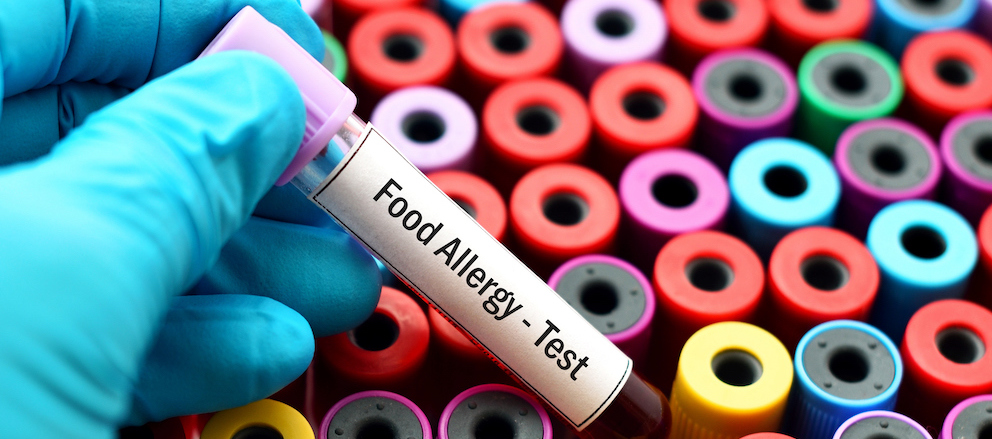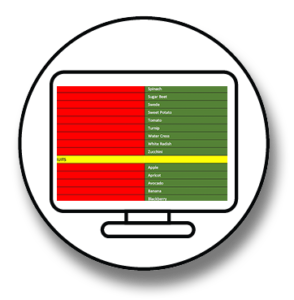
TYPE III Food Allergy Test
Identify The Foods That Your Body Reacts To

Order Now
What Is IgGAssay?
User-Friendly TYPE III Allergy Test
The IgGAssay IgG test is a microarray-based test measuring IgG antibodies to 200 commonly consumed foods using dry blood samples taken via finger prick.
This advanced technology can be used to detect which specific food proteins your body may struggle to digest. This maldigestion may be temporary or permanent, and it can be related to many factors such as enzyme deficiencies.

TYPE III Allergy Testing
A Complimentary Method to TYPE I Allergy Testing
Type I allergy tests (IgE assays) are the best-studied and most accepted tests for evaluating classic food allergy status. However, some clinicians also use type III allergy tests (IgG assays) to assess for food allergies, sensitivities, or intolerances. That’s why we offer this test: to enable providers to better support people experiencing adverse reactions to foods. Learn more
TYPE I Food Allergy vs.
TYPE III Food Allergy
Let’s Not Mix Apples and Oranges
Your immune system may react to certain foods. Some reactions are caused by a type I food allergy, but thankfully, most are caused by a much milder type III food allergy. The problem is it can be easy to confuse these two reactions.

TYPE I Food Allergy
In a TYPE I Allergy, even small amounts of the offending food can trigger a range of symptoms, which can be severe or life-threatening. A food allergy is an immediate immune response to a particular food and affects major organs within the body. This illness is often rare, affecting about 2% of adults. When an allergic episode occurs, the body’s immune system wrongly believes it is being attacked. In response, the body produces IgE (Immunoglobulin E) antibodies to fight these substances. The body’s reaction can be a range of immediate responses, from symptoms in the skin (hives), stomach (vomiting), lungs (coughing, wheezing), and circulatory system (decreasing blood pressure) to a systemic reaction known as anaphylaxis that can be fatal.
TYPE III Food Allergy (Delayed)
Type III food allergies, also known as food intolerances, food sensitivities, type III allergies, or delayed food allergies, can be extremely uncomfortable, but they’re not as severe as type I allergies. Type III allergies tend to be more widespread than type I allergies. They affect more people, and the symptoms can occur a few hours or several days after consuming an offending food. The good news is, that while the symptoms of a type III allergy can be troubling and uncomfortable, they are not life-threatening. Learn more
Common Symptoms Related to TYPE III Food Allergies
My body hates me is a common phrase uttered by people suffering from undiagnosed type III food allergies. And though this description seems dramatic, when you learn how type III food allergies can affect your autoimmune system, it makes sense. While a specific food is the trigger, it is your immune system that causes the symptoms. So, what exactly are those symptoms? One of the most frustrating things about type III food allergies is that they can produce symptoms from head to toe that trigger or mimic other illnesses. This makes them exceedingly hard to diagnose. Learn more
The Possible Causes Of TYPE III Allergy
(also known as food intolerance, food sensitivity,
or IgG-mediated food allergy)
A type III food allergy occurs when your body can’t completely digest a particular food. The proteins of this food enter your bloodstream undissolved, causing an immune system reaction.
In a healthy metabolism, your body extracts the proteins from the foods you consume and breaks them down into amino acids. Your immune system recognizes these amino acids and does not respond to them. However, if you have enzyme deficiencies or other health issues, the proteins may enter the bloodstream intact. Your immune system then behaves as though these proteins are invaders and starts producing IgG antibodies to attack the proteins. This process often results in inflammation and uncomfortable symptoms.
TYPE III Food Allergy and Inflammation
When you have a type III allergy to a certain food, eating this food will trigger your white blood cells to release substances such as cytokines, leukotrienes, and prostaglandins, that stimulate your immune system to start doing its job. This ultimately results in inflammation which may manifest as various physical symptoms.
Delayed Response
The symptoms of a type III food allergy don’t usually appear as soon as you eat the problem food. They might arrive hours or even days after eating that food, making it hard to connect specific foods to the symptoms you’re experiencing.
The Vicious Cycle
When you don’t know what foods you are sensitive to and keep on eating them, your metabolism gets caught up in a vicious cycle. The more inflamed your body gets, the more proteins enter your bloodstream; the more proteins enter, the more inflammation occurs. The only way to get out of this cycle is to identify the problem foods and eliminate them from your diet. Learn more
Food Intolerance Tests
The Differences In Testing Methods
Protein Microarrays (IgGAssay)
Protein microarrays are similar to ELISA assays. The proteins are deposited in small (100-300 urn) spots on a specially coated microscope slide in constructing microarrays. Microarrays offer the advantages of higher throughput, multiplex analysis, low reagent consumption, high sensitivity, and lower sample requirement compared to Western or ELISA assays. Learn more

Cytotoxic Methods
Cytotoxic testing involves a technician examining cells under a microscope to judge what foods cause a reaction. Some companies have improved this process by applying electronic instrumentation to measure and interpret the changes. Despite this, cytotoxic tests have been intensely criticized because, in cytotoxic test results, an individual’s day-to-day and month-to-month reactivity usually shows significant changes. Learn more
Elisa Testing
ELISA assays are often used to detect antibodies in the blood. They are not highly specific and can give false positives; however, they are very useful for looking at protein interactions and are simple to carry out. Learn more
Other Tests
Muscle testing, applied kinesiology, hair testing, and EAV (electronic testing) are alternative practices that are not part of conventional allergy testing. Learn more
How To Get Tested

Order via Your Practitioner

Prick Your Finger and
Fill in Your Form









